How to help keep monarchs from going extinct

By Mary Forgione
Hello readers of The Wild. I first saw tightly packed ribbons of orange and black monarch butterflies in eucalyptus trees on a bluff in Goleta, Calif., decades ago. Sunlight illuminated the grove where I was standing and almost immediately, wings started to open and flutter. The butterflies resembled one collective organism slowly coming to life. I was dumbfounded by their wild beauty.
These days, fewer people may have this experience. The population of migrating Western monarchs that once traveled between Baja, Mexico, and Northern California is perilously close to collapsing. Five years ago, 28,000 butterflies migrated through the Monarch Butterfly Grove in Pismo Beach. In 2020, just 200 monarchs were counted by volunteers.
Farther north in Pacific Grove, which claims the title Butterfly Town USA, there were none. “In 1997 there were 45,000 butterflies at our sanctuary and now there’s zero,” Caleb Schneider, manager of the Monarch Butterfly Sanctuary in Pacific Grove, said in this L.A. Times story. “I’ve been here six years, and I never got a chance to see what butterfly clustering in Pacific Grove really looked like, where historically the branches were getting ripped off the trees because there were so many butterflies. I’m watching the extinction of a natural phenomenon.”
Sadder still is that monarchs may become extinct while waiting for the U.S. Fish and Wildlife Service to list them as endangered (there are 161 species in line before them).
Why should we care? Like all species, monarchs are part of the cycle of nature, which always requires our attention. They are a vital food source for birds (as caterpillars) and important as pollinators of wildflowers and other plants. But they’re also beautiful; shouldn’t that count for something?
What has gone wrong for monarchs is what has gone wrong for other species. “The list for blame is long — habitat destruction, insecticides, herbicides and, yes, good intentions, because if you’ve ever planted a showy orange milkweed in Southern California with the goal of helping the monarch, consider yourself part of the problem,” my Times colleague Jeanette Marantos writes.
It’s hard to sit idly by and watch species go extinct. So don’t. Create much-needed habitat by planting native buckwheat and native milkweed in your backyard. It will help the monarchs and other species thrive. Read about more ways your actions can help.
3 things to do this week

1. Follow this GPS musical map on your next Griffith Park hike. Have you ever hiked a trail set to music? Here’s your chance to listen in. Composer and sound artist Ellen Reid created a “Soundmap” that features original music tied to GPS points for 20 miles of trails in Griffith Park.
Here’s how my Times colleague Deborah Vankin explains the experience: “The soundtrack to this particular spot on the Fern Dell Trail is soothing and gentle, with viola and cello strings leading the way along a shady, forested patch. Farther up, on the East Observatory Trail, a jazzy drum solo kicks in, punctuating each switchback with a thump-ding-and-wire-brush swoosh, heightening anticipation around every corner. As the trail gets steeper, the jazz riff gets faster and anxious-sounding.” (Consult the “Ellen Reid Soundwalk” map to see where you can expect to hear music. Download and activate the free app here.)
The Pulitzer Prize-winning composer created a “Soundwalk” for Central Park too, and plans to expand to other cities. So rock on, with boots on.

2. The rooftop deck of Santa Monica Place is now a pop-up outdoor boxing gym. We all miss the gym. Rumble offers an alternative. The brand built on a “boxing lifestyle” is booking in-person outdoor workouts on the third floor of Santa Monica Place, between Ocean Avenue and Fourth Street. Classes feature boxing with water-filled punching bags and strength training with dumbbells. It costs $32 per 45-minute class or $225 for 10 classes. (Masks, social distancing and other COVID-19 rules enforced.) Classes continue through May 31. Participants must book in advance here.
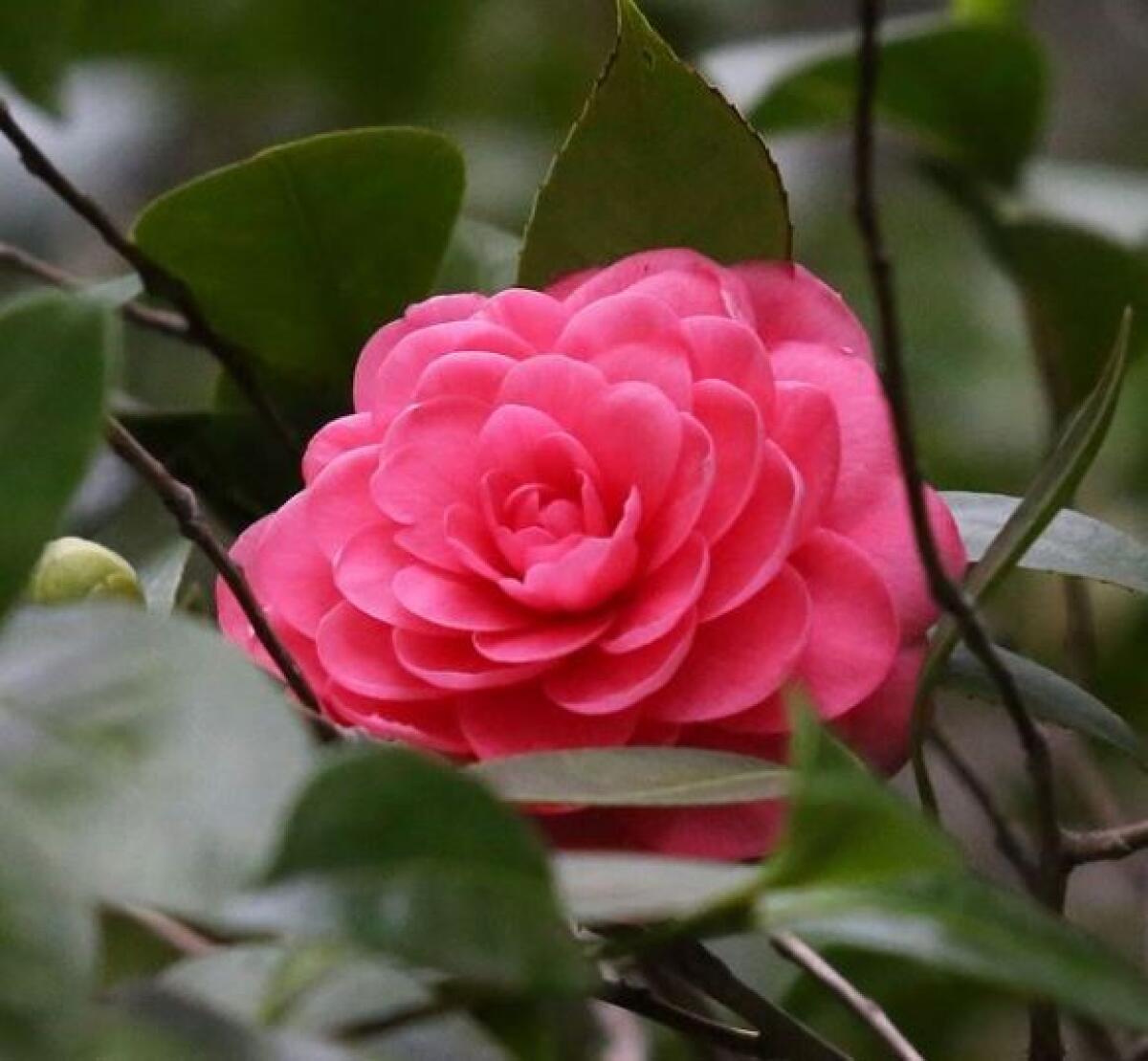
3. Spectacular blooms you can see right now: camellias. Last week I told you about Southern California’s lackluster forecast for wildflowers. This week there’s better flower news. Big, showy camellias are popping right now in shades of white, pink and deep rose.
Where to find them? Descanso Gardens in La Cañada Flintridge lays claim to the largest camellia collection in North America. It’s the site’s signature flower, with plantings dating to the 1930s and ’40s. ($15 for adults, advance purchase required, except members). The Huntington Gardens in San Marino tends 80 camellia species and 1,200 cultivated varieties ($25-$29 for adults, advance purchase required).
Cool gear
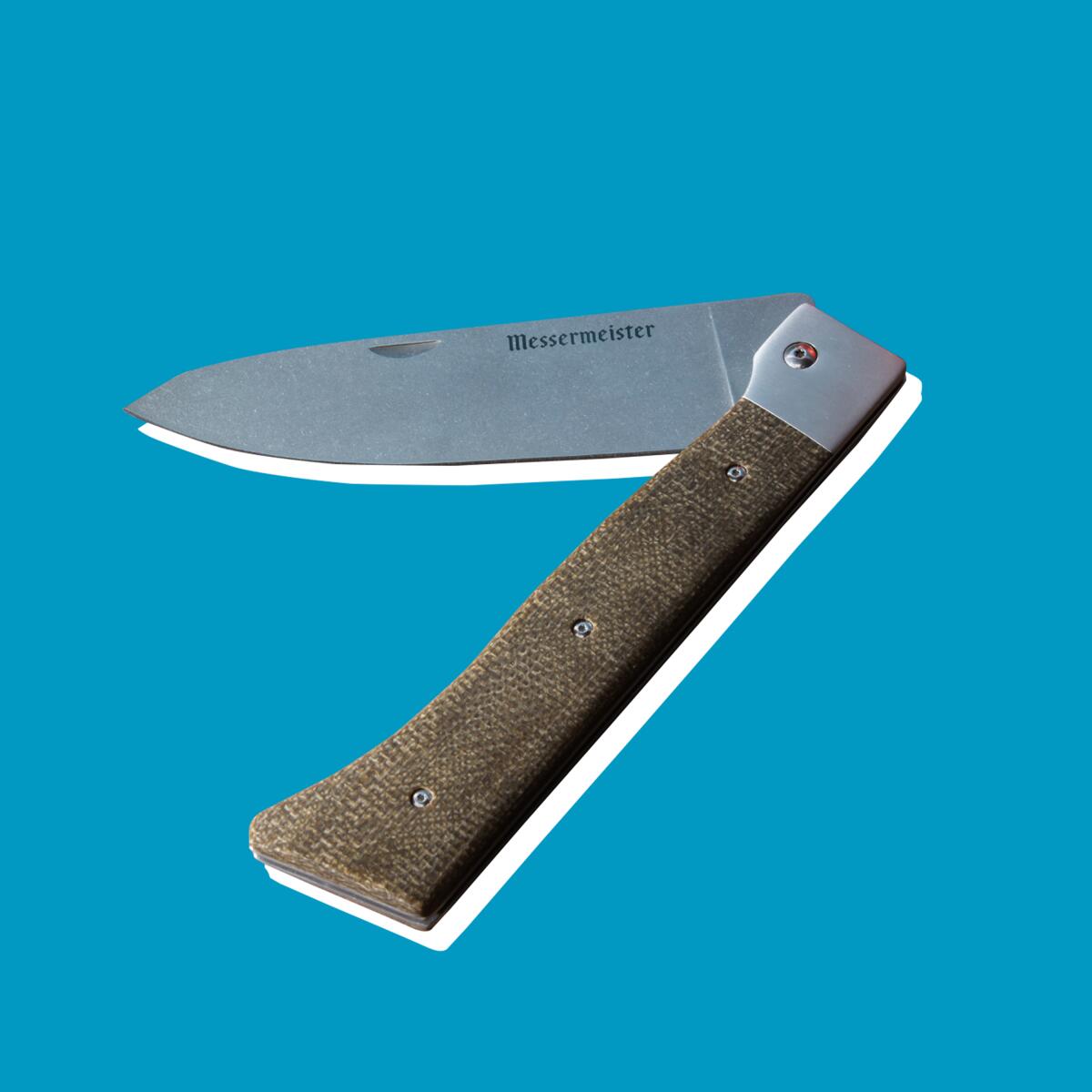
When I camp and backpack, I’m a heat-up-noodles kind of person. For gourmet campers, the correct tools can make a difference. Messermeister, a woman-owned business based in Ojai, sells a line of Adventure Chef knives for those who want to “cook outside like a pro.” One item of note: a folding 6-inch chef’s knife with a maple or burlap handle ($79.95). The company collaborated with outdoor adventure chef Adam Glick (“Stoked” on Outside TV and “Below Deck” on Bravo) in developing the line. Whether you become a gourmet camping cook, that’s on you.
The must-see
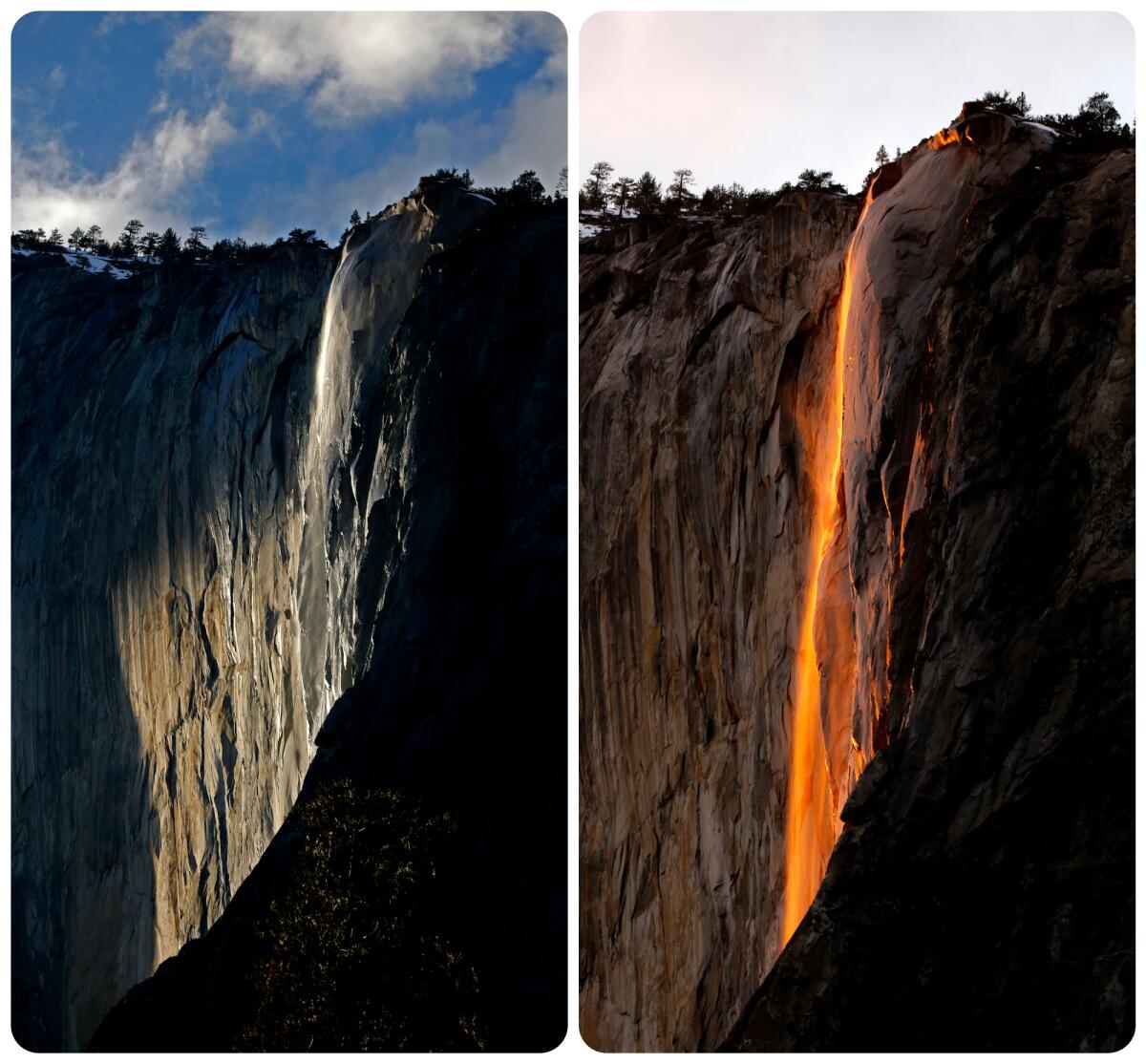
Photographer Raul Roa has more luck than most when it comes to Yosemite’s natural “firefall.” Roa, who shoots for the L.A. Times and Times Community News, beautifully captured the moment on Feb. 20 when light from the setting sun created a perfect glow on the 1,575-foot Horsetail Fall on the east side of El Capitan. In the first photo, you see the waterfall in waning daylight and then, next, the rock face magically transformed by light.
It almost didn’t happen. “Hundreds of faithful flocked to the area to watch the phenomenon, which only had a slight chance of occurring on this day,” Roa told me. The forecast for best firefall viewing this year was between Feb. 18 and 23. Weather, fog, a passing cloud — anything could ruin visibility. Luckily Roa and his skilled photographic eye prevailed.
Social moment
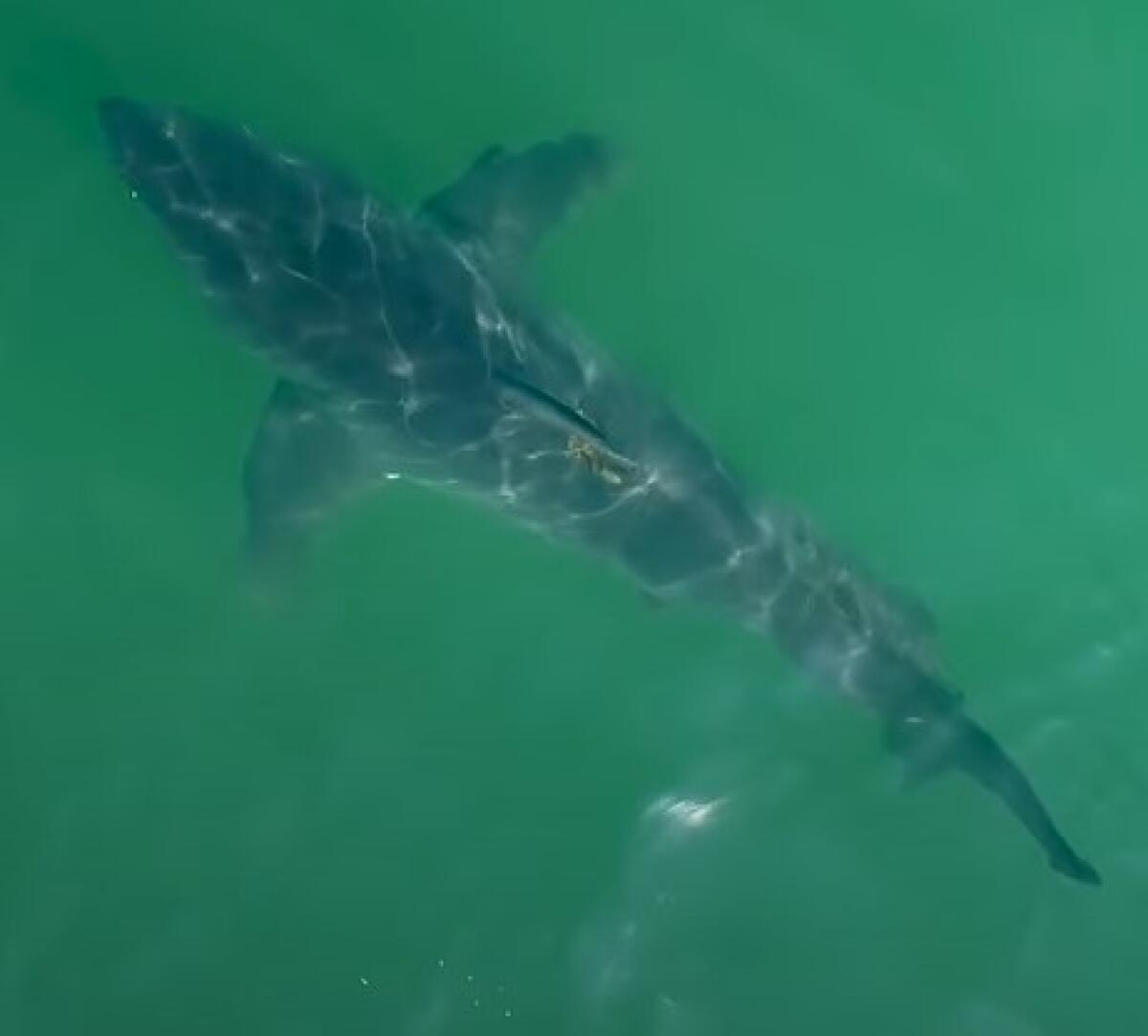
Young great white sharks hang in the shallow waters off Southern California. How close do they get? Only Carlos Gauna knows. The professional photographer, a.k.a. the Malibu Artist, has been consistently drone-filming sharks from beaches. His most recent terrifying footage: a shark coming close to surfers on Super Bowl Sunday. You can hear him warning them as he’s filming/tracking the shark. Check out the video. Whew. For more amazing videos, check out his Instagram account.
Juvenile sharks hang out in waters south of Santa Barbara until they are 2 or 3 years old. After that, they grow bigger and seek deeper, colder waters. Scientists tagged 53 juvenile great white sharks with transmitters last year in Southern California, according to this Associated Press story.
But that doesn’t mean they pose a threat to surfers or anyone else. A marine biologist in Long Beach who tracks sharks says they “generally avoid people, and when they do bite somebody, it’s often just once,” the story said. As oceans have warmed, the number of young sharks is on the rise in places farther north, such as Monterey Bay and Santa Cruz.
The must-read

If your biggest achievement this week was being on time for your work Zoom meeting, consider what Jasmine Harrison’s week was like. The 21-year-old British schoolteacher rowed into the record books on Feb. 21, becoming the youngest woman to cross an ocean alone. She covered 3,000 miles on her solo journey.
It took 70 days, three hours and 48 minutes for her to paddle from the Canary Islands off the coast of Morocco to Antigua in the Caribbean. (She could have taken a 23-hour flight, with plane changes.) She was taking part in the Talisker Whisky Atlantic Challenge and, rather than join a team, she decided to do it by herself. My favorite part: the feel-good photo of her setting off flares at the end (above). Read the story here.
P.S.
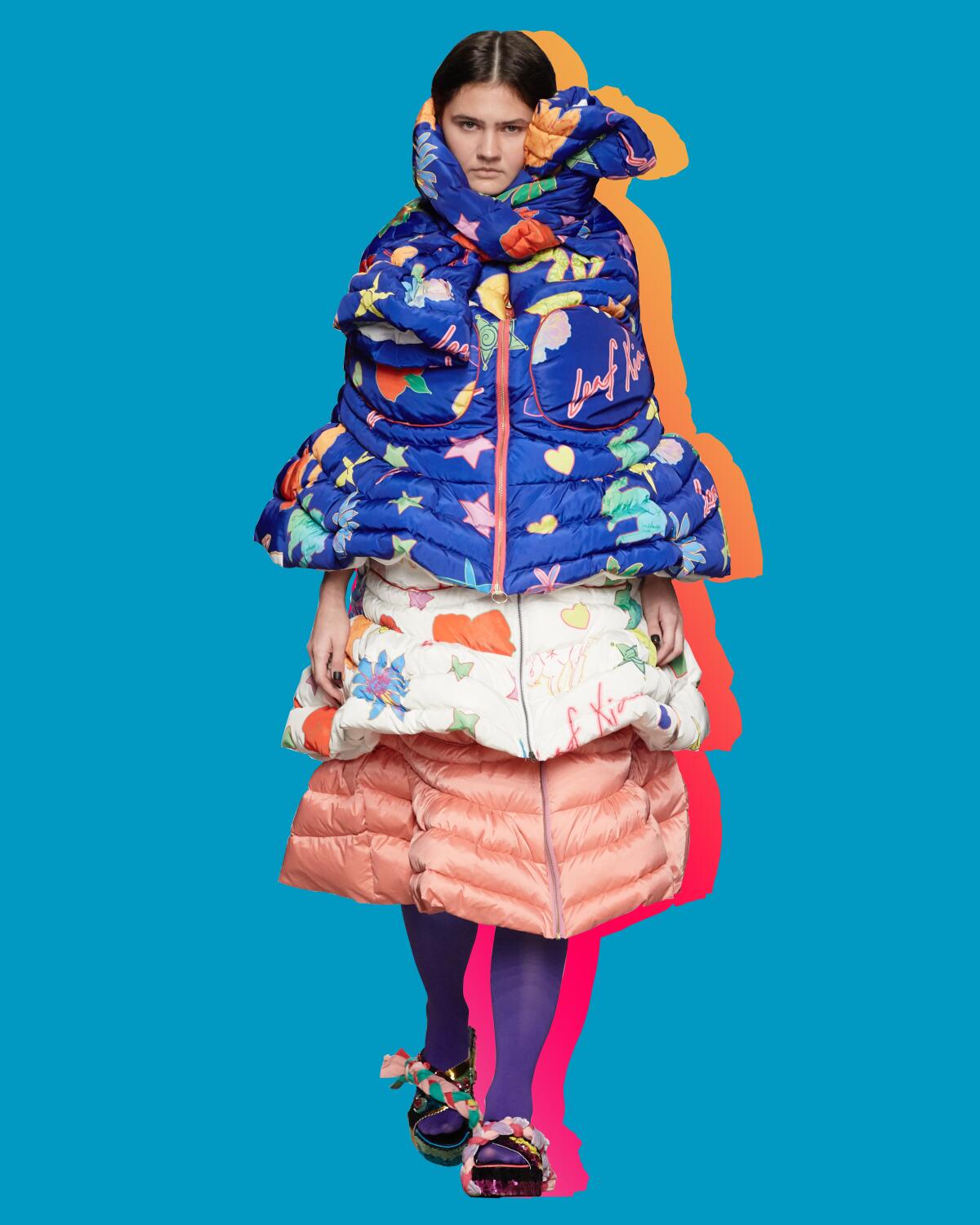
In January, I wrote about the puffer jacket that Eddie Bauer (the man) patented in the 1930s. But there’s more to the story of where down came from. Indigenous people in Alaska and Canada have long worn clothes made from skins, furs and feathers to insulate themselves from harsh Arctic temperatures. And Australian @Katelizabethr tweeted to remind me that in 1922 Australian mountain climber George Finch ordered a bright green, custom-made puffy-esque “eiderdown jacket” for an expedition to Mt. Everest. In thinking more about the puffy, I found amazing photos of how the fashion world blew it up, such as Leaf Xia’s design at a 2019 fashion show in Moscow (above).
Send us your thoughts
Share anything that’s on your mind. The Wild is written for you and delivered to your inbox for free. Drop us a line at TheWild@latimes.com.
Click to view the web version of this newsletter and share it with others, and sign up to have it sent weekly to your inbox. I’m Mary Forgione, and I write The Wild. I’ve been exploring trails and open spaces in Southern California for four decades.

Sign up for our L.A. Times Plants newsletter
At the start of each month, get a roundup of upcoming plant-related activities and events in Southern California, along with links to tips and articles you may have missed.
You may occasionally receive promotional content from the Los Angeles Times.




